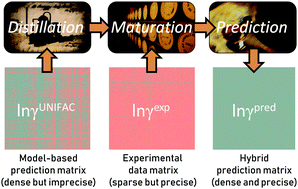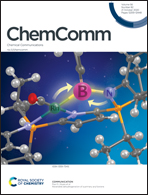Hybridizing physical and data-driven prediction methods for physicochemical properties†
Abstract
We present a generic way to hybridize physical and data-driven methods for predicting physicochemical properties. The approach ‘distills’ the physical method's predictions into a prior model and combines it with sparse experimental data using Bayesian inference. We apply the new approach to predict activity coefficients at infinite dilution and obtain significant improvements compared to the physical and data-driven baselines and established ensemble methods from the machine learning literature.



 Please wait while we load your content...
Please wait while we load your content...